12 trends of Chelsea Flower Show 2024 |
|
|
|
|
 |
| 239 sec |
Now that the dust has fallen off the Chelsea Flower Show, and under the guise of better late than never, we wanted to look back (with a bit of nostalgia) at the Chelsea Flower Show 2024. Which 12 trends could we detect in the green violence?
| Best in Show Garden was the 'forest bathing garden' of Ula Maria where you saw several trends come together: reuse, water and of course lots of trees. |
1 Water
Water was literally everywhere. From streams, to ponds, to water tables, fountains and even in the form of a hip Wim-Hofman ice bath. Designer and gardener Tom Bannister made his debut this year with his 'Eco-Therapy-Garden' in the category Balcony & Container gardens. His garden felt like a green comforting hug that completely enclosed you, so he won a well-deserved gold. Bannister had cast tubs himself with lightweight concrete (a unique feature, see point 3) through which the water flowed through the garden. One tub served as a large bathtub for cold water therapy. Bannister regularly suffers from back pain and other muscle pain due to his gardening work, ice baths are particularly beneficial according to him. Furthermore, his garden was mainly green with a single mini flower.
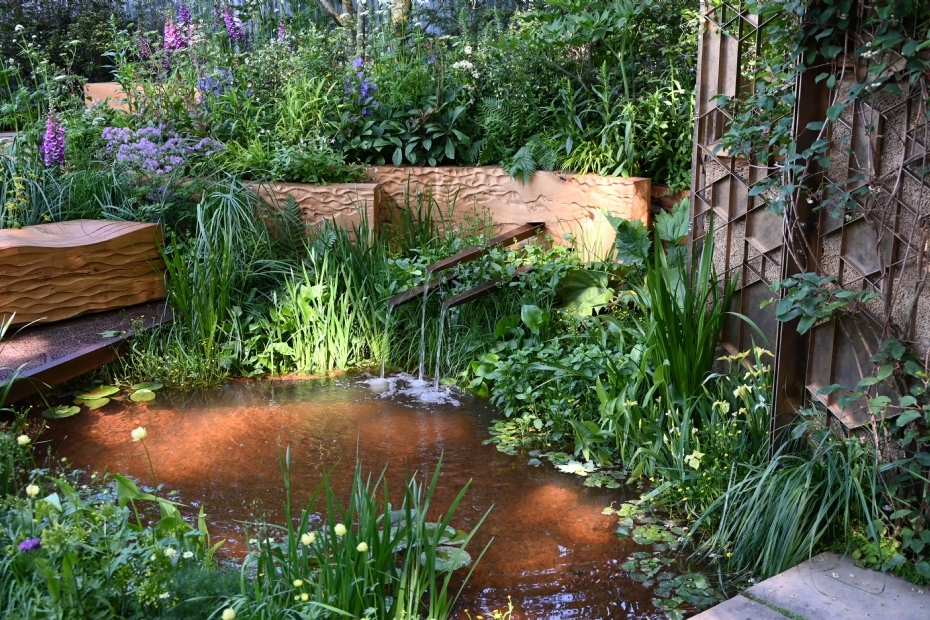 | | Water combines with Corten steel in the garden of Terrence Higgins Trust Bridge to 2030 Garden. The planting in the garden is inspired by the recolonisation of plants in the former slate quarries of North Wales. |
|
|
2 Climate adaptation
Many designers and gardeners I spoke to about their show gardens had thought about climate adaptation. Either because the borders consisted of extra water-permeable material or the plating consisted of drought-loving plants.
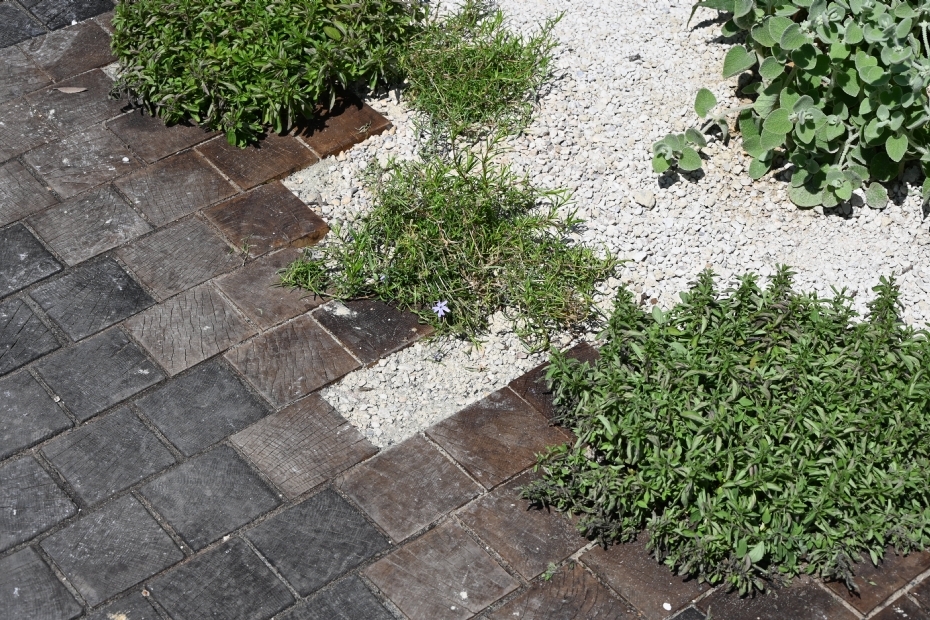 | | A path of recycled wooden beams combined with white/grey semi-hardening. |
|
|
3 'Anti' concrete
Tile out and green in is of course not a new trend, but in Chelsea they are of course taking it a bit more seriously. According to data from a British gardening magazine, three quarters (74%) of all Chelsea gardens were cement-free this year. This was also evident from the conversations I had with designers; when I asked about the decorative paving, most designers immediately apologized by saying that it was cement-free. What also struck us: the use of a lot of semi-hardening.
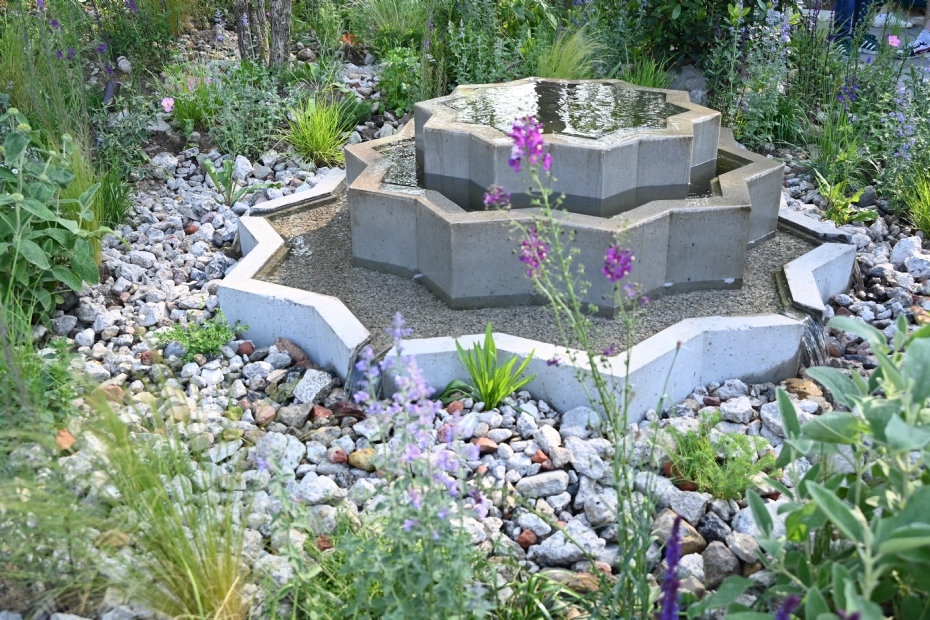 | | This fountain was a 'second-hand' from an old Chelsea show garden in the RHS Chelsea Repurposed Garden, designed by Darryl Moore and Toby Magee of landscaping company Cityscape. |
|
|
4 Reuse
Why choose new when second-hand is just as good? For example, the RHS Chelsea Repurposed Garden, designed by Darryl Moore and Toby Magee of landscaping company Cityscape, was made almost entirely of recycled materials from previous show gardens dating back to 2010. Such as the large corten steel columns from a show garden in 2014 that served as a garden bench this year. In the best in Show garden (the main prize of the awards show) of Ula Maria, reuse was also abundantly present. In the bungaroosh wall but also the decorative paving there was completely reused.
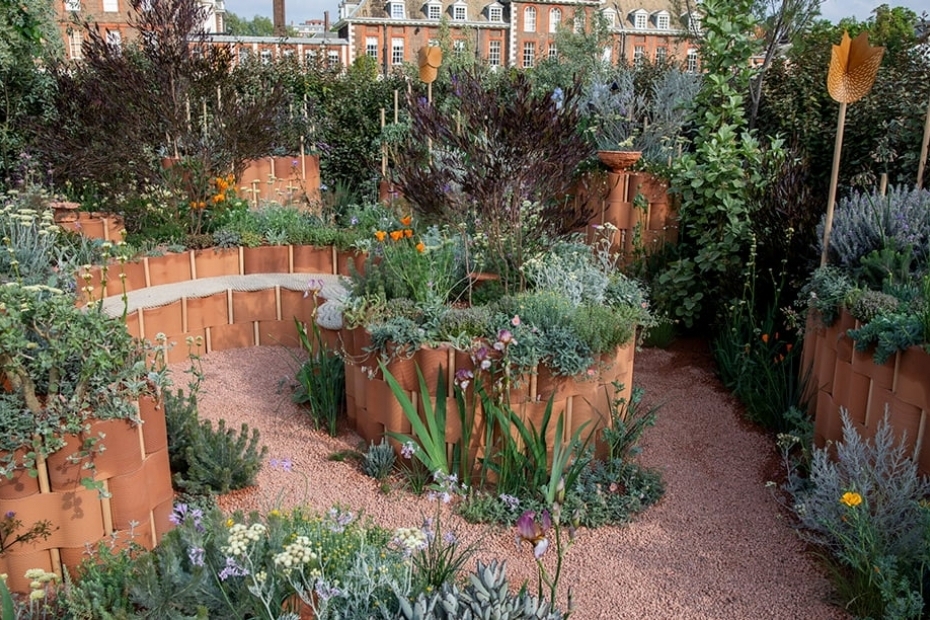 | | This sanctuary garden was filled with 3D-printed key-shaped terracotta building blocks. |
|
|
5 Sustainability (award)
Perhaps a bit of a no-brainer as a trend. Because what is not called sustainable these days? But to be fair, Chelsea is really trying to make it work. See of course points 3 and 4. That is why she also launched a new Sustainability Award this year, the award is a recognition for the gardener and the designer to reduce the environmental impact of their garden. Italian garden designer Giorgi and gardener Landesigns managed to win this award with their sanctuary garden full of 3D-printed 'Lego' terracotta bricks.
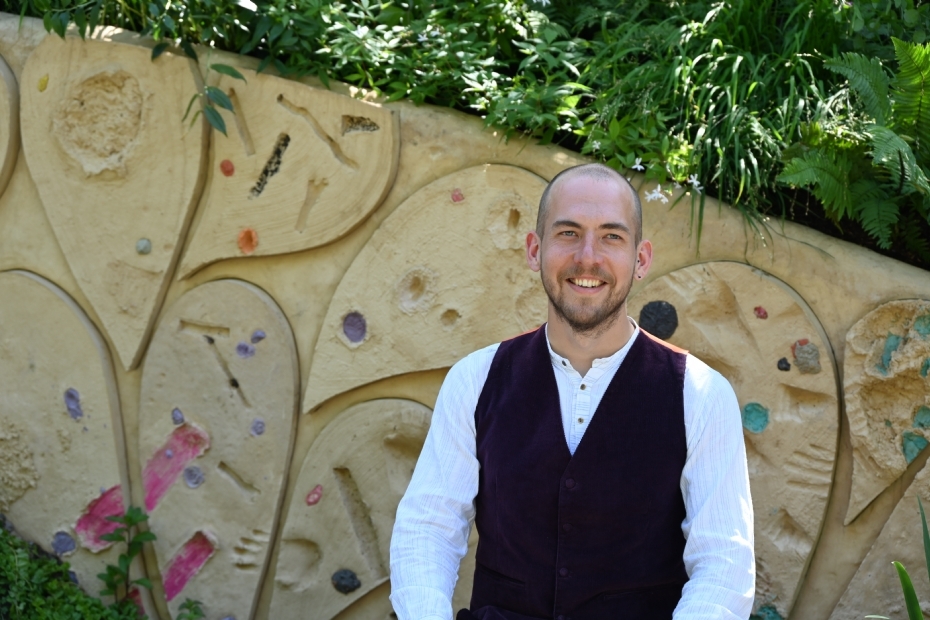 | | Designer Harry Holding in his 'children's garden'. |
|
|
6 The first children's garden
The grey hair of the average visitor to the Chelsea Flower Show betrays that they have not been children for quite some time. But this year, designer Harry Holding had designed a garden for and with children. This garden was in collaboration with the organiser RHS, which meant that Holding could not receive any prizes. As far as we were concerned, this garden also deserved a gold medal. The design was playful and exciting, with differences in height, of course with water, a corten steel slide with a lookout tower, creatively incorporated children's drawings and playful planting.
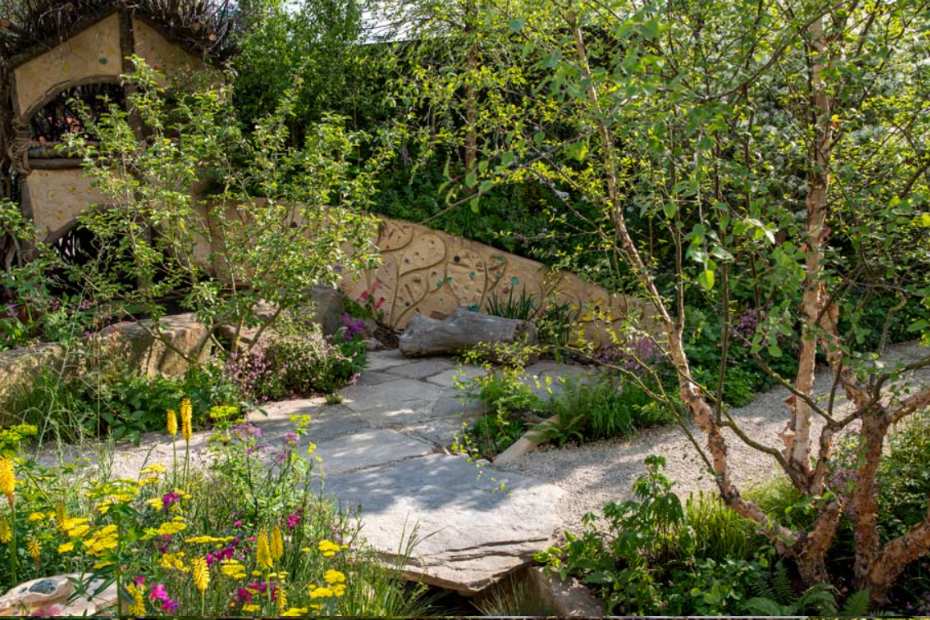 | | The RHS No Adults Allowed Garden of designer Harry Holding. |
|
|
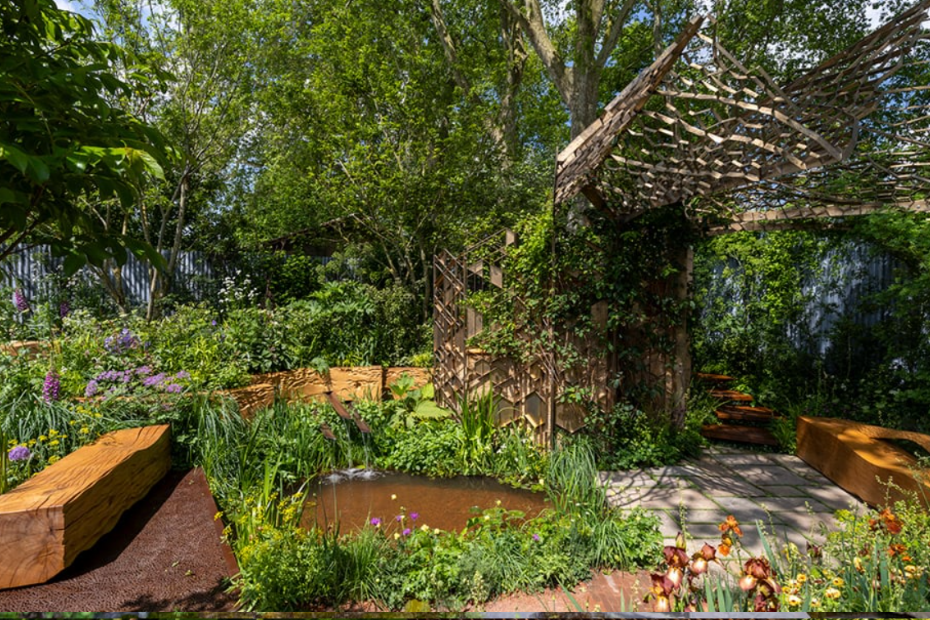 | | The Octavia Hill Garden by Blue Diamond with the National Trust won the first children's award. |
|
|
7 Another new winner
It can be hard to keep track of the many different awards on offer at the Chelsea Flower Show. There’s an award for almost everything from best design to best construction, with medals ranging from gold to bronze. However, the organisers decided that this wasn’t enough and launched two more awards. In addition to a sustainability award, a children’s award was also introduced. The Octavia Hill Garden, designed by Ann-Marie Powell and installed by The Landscaping Consultants, became the first winner of the RHS Children’s Choice Award.
8 Corten steel
We also noticed that corten steel, also known as weathering steel, is here to stay. You might think that the trend is somewhat over, but a look at the Chelsea Flower Show tells us otherwise. At this British garden show, the characteristic rusting material was still being used extensively. It was not used for something as standard as edging, but from slides to fountains and even an entire water pavilion colored Chelsea orange/brown.
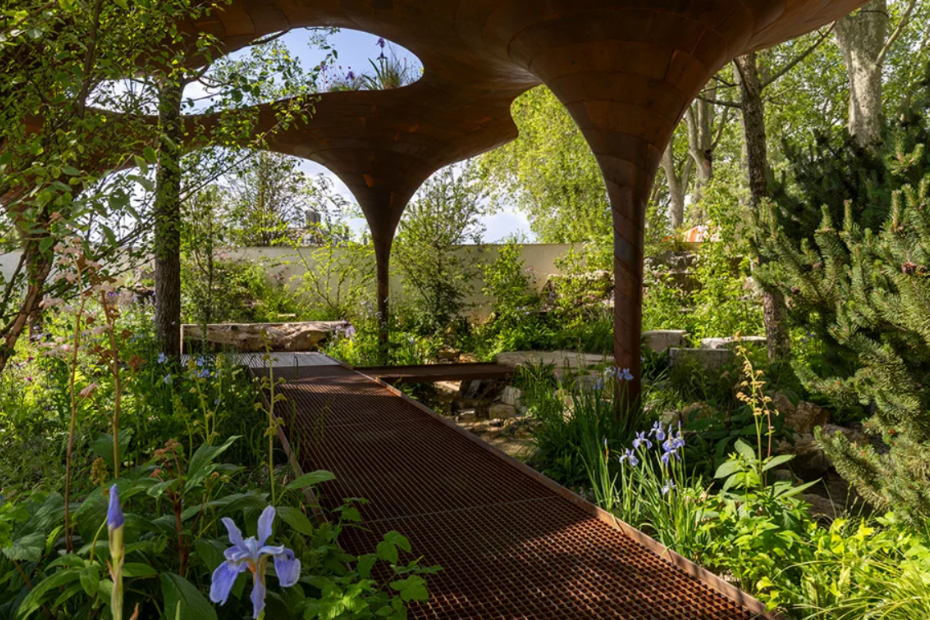 | | In the WaterAid Garden, Corten steel also played a dominant role. The impressive pavilions were made entirely of weatherproof steel, as were the paths and bridges in the garden itself. |
|
|
9 Water conservation was a major theme
That water pavilion was designed by designer Tom Massey and architect Je Ahn. Their WaterAid Garden was just one of a number of gardens dedicated to water issues. The Flood Resilient Garden by Naomi Slade and Dr Ed Barsley, and The Water Saving Garden by Sam Proctor were also part of the gardens. There were numerous gardens that showed different methods by which visitors - and the gardening sector - could reduce water consumption in gardens and collect rainwater. As far as we are concerned, a positive development.
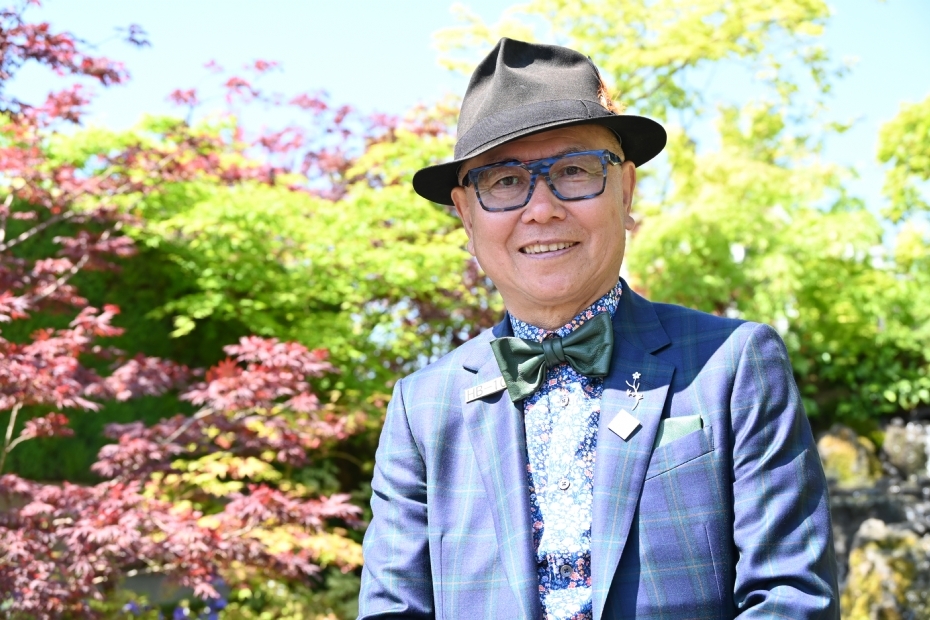 | | Japanese Kazuyuki Ishihara is also known as the 'Moss King' because of his frequent use of moss in his designs. |
|
|
10 Moss is beautiful
Where the average Dutch garden owner is busy every spring removing moss from his or her back garden, moss was embraced in Chelsea. And deservedly so, because this fantastically beautiful, natural material immediately gives designs a certain softness. In our opinion, the 'Moss King' Kazuyuki Ishihara also had one of the most beautiful gardens. According to Ishihara, his garden with vibrant acers and a tumbling waterfall combines the beauty of the natural world with the practical aspects of family life. It seemed to us more like a garden for someone with hobbies such as drinking whisky, smoking cigars and riding a motorbike. But those are just details; the garden offered a completely different view from every angle. A real wow factor. Funnily enough, the un-British warm and sunny weather meant that his garden team spent the entire day keeping the precious moss moist.
11 Trees
A trend that I also described in my editorial. Trees are back! (Or maybe they never went away) But they were clearly present in large numbers. The winning show garden was of course a real forest bathing garden with no less than 50 birch trees in all shapes and sizes. Betula nigra could also be admired in the 'The National Autistic Society Garden', here it was often combined with Sphagnum moss (also known as peat moss, see point 10). Nursery Boom & Bonheur also supplied various character trees for the Killik & Co: 'Money Doesn't Grow On Trees' garden. Such as Ulmus hollandica 'Jacqueline Hillier', but also the somewhat lesser known Tilia cordata 'Dila', a cordata type of its own with a compact crown like all cordatas, but has a somewhat looser branching pattern than the well-known 'Greenspire'.
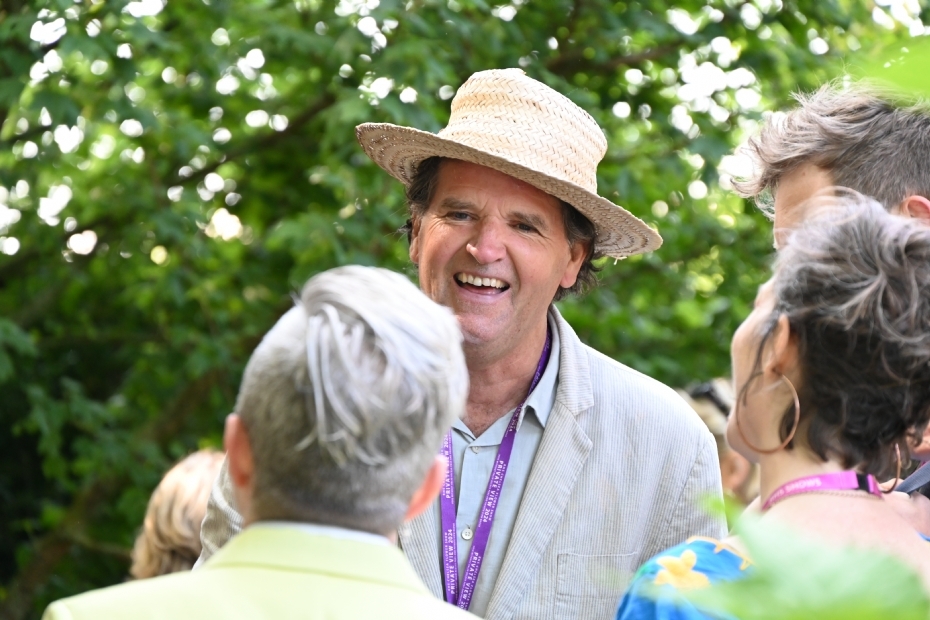 | | Veteran Tom Stuart-Smith's garden at the Chelsea Flower Show was mainly native, but ornamental value was certainly paramount, and it was striking that all his flowers were white. |
|
|
12 Native is again subservient to ornamental value
A person I met at the Chelsea Flower Show put it aptly: 'Last year you sometimes wondered whether you had to mow or whether it was a border.' This year that confusion seemed to be a thing of the past. There was certainly still a lot of talk about native, but no longer in the form of super wild seed mixtures. The ornamental value was much more clearly present.
| LOG IN
with your email address to respond.
|
|
|
| There are no comments yet. |
Tip the editors
|